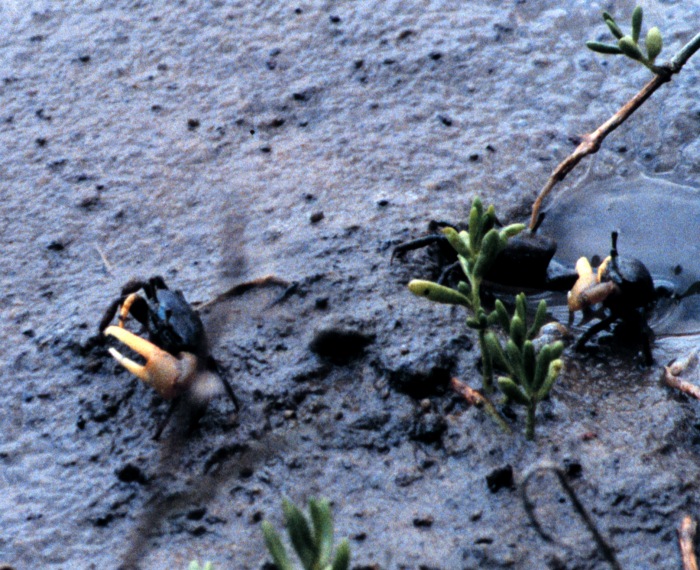The blue crab lives near the Hudson River.


The blue crab got its name because it has a blue-tinted patch on its front claws.
The blue crab can grow up to 4 inches long and 9 inches wide. An adult blue crab weighs between one and two pounds. The blue crab has 5 sets of legs! The front set of legs has claws and they have been adapted for eating and protecting the crab from predators.
The back legs are used for locomotion. They are shaped like paddles.
The blue crab's hard outer shell is another adaptation that it has made to protect itself from predators. The blue crab's predators include the striped bass, black bass, bluefish, and humans.
The blue crab's habitat includes coastal lagoons and estuaries. The Hudson River is an estuary. The blue crab lives on the floor of the Hudson River. The blue crabs can be found as far north as Albany!
Blue crabs are not picky eaters. The blue crab's diet is made up of many types of plants and animals that live in the Hudson River, including fish, snails, and smaller blue crabs. The blue crab's diet helps to keep the Hudson River's animal population in balance. The blue crabs are important to the Hudson River because of the plants and animals that they eat. If they were not there, many kinds of plants and animals would become overpopulated. Humans have to be careful and not catch too many blue crabs.
The blue crabs have adapted their _____ for eating and protecting themselves.
 |
Animal |
 |